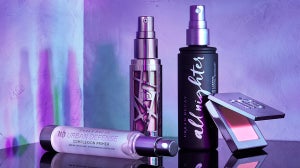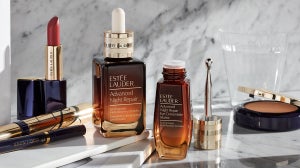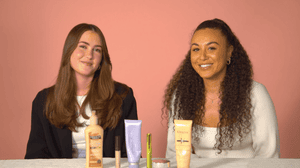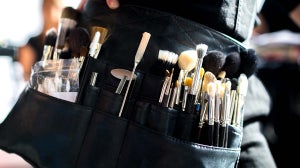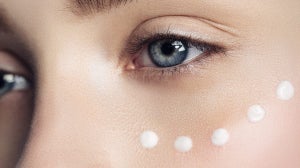
Suitable for both beginners and skincare enthusiasts, The INKEY List keep their formulas fully transparent so that you can pick the best ingredient for your key concerns. Though they may be visible to read, with an ever-growing world of new miracle ingredients, we may not be familiar with some of the more advanced ingredients on The INKEY List's INKEY List!
To help you navigate the no-nonsense brand, our pharmacist decodes 5 ingredients that will help you achieve clear and glowing skin...

Polyglutamic acid
What is polyglutamic acid?
"A water-soluble peptide that mainly functions as a humectant by hydrating your skin surface and forming a lightweight film on the skin that can help to lock-in moisture. Polyglutamic acid consists of larger molecules that can hold 4x more moisture than hyaluronic acid, helping to smooth your skin."
What are the benefits of polyglutamic acid for the skin?
"It helps to improve skin hydration, can also help increase the production of our natural moisturising factors (NMF) in our skin, helps with skin barrier function, alongside enhancing skin elasticity and can help to brighten the skin."
Which skin types is polyglutamic acid best suited for?
"It's suitable for all skin types."
Which skin concerns can polyglutamic acid help with?
"Dryness, dull dehydrated skin."
Introducing the new Polyglutamic Acid Dewy Sunscreen SPF30
Boasting broad-spectrum UVA and UVB protection to keep the skin shielded from the sun's harmful rays, this lightweight and fast-absorbing SPF30 is suitable for all skin types. Designed to be applied daily in the morning, the sunscreen contains an 8% hydration trio of polyglutamic acid, glycerin and squalane that infuse moisture into the skin to instantly plump, smooth and enhance.
How often should The INKEY List Polyglutamic Acid Dewy Sunscreen SPF30 be applied?
"Re-apply SPF liberally every two hours, especially if you are exposed directly to sunlight and are going to be spending most of the day in the sun. Take into consideration that sweat, swimming and beach towels can rub off SPF, therefore apply more frequently. If reapplying over makeup, The INKEY List recommends reapplying the formula with a beauty blender and lightly dabbing it all over the face until it's absorbed and each area is covered".
When in a full skincare routine should the polyglutamic acid SPF be applied?
"Apply the Polyglutamic Acid Dewy Sunscreen SPF30 as the last step in your morning skincare routine, after moisturising. Apply to your face and neck at least 15 minutes before sun exposure. The INKEY List recommends applying the product to 3 fingers first to get the right amount (this equates to about 3/4 of a teaspoon)".
Oat
Formulated with colloidal oatmeal and oat kernel oil, The INKEY List Oat Cleansing Balm gently removes impurities, excess oil and dirt from the skin, reaching deep into the pores to leave the skin feeling refreshed and hydrated. The soothing and smoothing cleanser is sensitive skin-friendly, melting onto the skin without irritation.
What are the benefits of oat for the skin?
"Oats are rich in lipids and unsaturated fatty acids. Formulated in skin-care products, some oat active ingredients can help to hydrate your skin and help repair your skin barrier function as well as soothe your skin."
Which skin concerns can oat help to treat?
"Dry sensitive skin prone to redness."
Is oat suitable for sensitive skin?
"Colloidal oatmeal is a skin-beneficial active ingredient that can help gently soothe irritation. The INKEY List Oat Cleansing Balm is formulated with 1% colloidal oatmeal to help to reduce the appearance of redness, making this suitable for sensitive skin."
When should the Oat Cleansing Balm be used?
"Use the balm as a daily cleanser, as part of your morning and evening skin-care routine. Follow with a hydrating toner, mist, serum and moisturiser and then SPF as the last step in your AM skincare routine."
How to use the Oat Cleansing Balm as part of a double cleanse routine
"The oat cleansing balm is oil-based and can be used as part of a double-cleanse routine to help remove SPF,makeup and other impurities. You can even use this balm on its own as a daily cleanser."
Peptides
Helping to repair and protect damaged skin, The INKEY List Peptide Moisturizer helps to support cell renewal and collagen production to keep the skin looking plumper and reduce fine lines. Packed with highly-hydrating ingredients, the moisturiser keeps the complexion smooth and soft.
What are peptides?
"Peptides are short chains of amino acids. When formulated in skin-care products, they can help to improve the signs of ageing and can also help support your skin with hydration and firmness."
Why do we need peptides in skincare?
"Peptides are naturally found in our body as fragments of protein in your skin helping with skin texture. However, as we age proteins such as collagen and elastin begin to breakdown and can cause the appearance of wrinkles and a lack of ‘bounce’ in our skin."
What are the benefits of peptides for the skin?
"Peptides can help strengthen and repair your skin barrier, smooth the appearance of fine lines and wrinkles, soothe any irritation or redness on your skin and can also help restore elasticity in your skin."
Which skin types are peptides best suited for?
"All skin types, especially dry skin."
Which skin concerns can peptides help with?
"Fine lines and wrinkles, dullness, irritated skin."
Mandelic acid
The INKEY List Mandelic Acid Treatment is a blend of retinol and madelic acid that helps to even out the skin's tone and texture, treating concerns including melasma, breakouts and acne scars. The gentle formula supports the skin's hydration levels to ensure comfort and a glowing complexion.
What is mandelic acid?
"Mandelic acid is an AHA (alpha hydroxy acid) form of exfoliating acid, derived from bitter almonds. It works by gently exfoliating the surface of the skin by loosening the bonds between dead skin cells to help smooth skin texture."
What are the benefits of mandelic acid for the skin?
"It helps to fade discoloration, reduce the appearance of hyperpigmentation and helps to even out your skin tone for a more radiant complexion."
Which skin types is mandelic acid best suited for?
"Mandelic acid is suitable for all skin types, including sensitive skin, as it has a large molecule size allowing it to penetrate the skin slowly therefore helping to minimise irritation."
Which skin concerns can mandelic acid help with?
"Dark spots, blemish dark spots and breakout marks."
When should The INKEY List Mandelic Acid Treatment be applied?
"Use once daily as part of your evening skin-care routine. Cleanse and hydrate your skin with a toner or mist spray, then apply a thin layer to any affected areas and then follow with your serum and moisturiser."
Succinic acid
Expertly blended to help reduce the appearance of inflammation and control oil production, The INKEY List Succinic Acid Blemish Treatment uses 2% of the ingredient as well as 1% salicylic acid and 2% sulfur to reduce breakouts and minimise pores.
What is succinic acid?
"Succinic acid is a naturally occurring bio-based ingredient derived from plants or animal tissues with soothing anti-microbial properties."
What are the benefits of succinic acid for the skin?
"It can help to reduce oil levels, alongside helping to treat and reduce blemishes."
Which skin types is succinic acid best suited for?
"Oily, acne and blemish-prone skin."
When should The INKEY List Succinic Acid Blemish Treatment be applied?
"After you have cleansed your face, apply a hydrating serum, then apply the succinic acid treatment to blemishes and breakouts that are currently present on your skin. Leave the formula to dry for 5 minutes before applying moisturiser. A small amount can be applied directly onto a blemish up to three times per day."
Are there any ingredients that shouldn’t be used at the same time as succinic acid?
"The INKEY List recommends avoiding applying any other active ingredients, such as exfoliating acids, retinol, vitamin C or niacinamide to the same area that you are treating with succinic acid."

Related Articles
